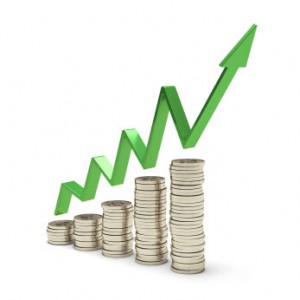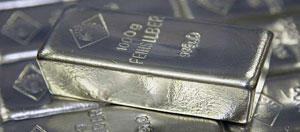METAL SILVER
 Besides Petroleum, Silver is Used in More Applications Than Any Other Commodity!
Besides Petroleum, Silver is Used in More Applications Than Any Other Commodity!
• Most Reflective of all Metals
• Greatest conductor of both Heat and Electricity
• Strongly Resists Corrosion and Oxidation
• Second most Malleable and Ductile Metal
• Recently Discovered to be a Very Effective Anti-Microbial/Bacterial
HIGHLIGHTS
The possibility of silver-based catalytic converters. In 2003 a bill was passed by the congress to study the use of silver in the automotive catalytic Research and testing is currently being carried out in a three-year government program.
New Developments in Superconductors require silver tape A new form of cabling has recently been developed which can carry more electrical current in much smaller spaces with far less resistance. This new technology (Nobel Prize awarded in 2003) should one day replace old power grids, especially in larger cities where space is at a premium and large electrical loads a necessity.
Environmentally friendly replacement of lead based solders (Silver is unique in that it can join many different metals together at temperatures well below the metals melting point) The European Union law, which bans the use of lead based solders, comes into effect on July 1, 2006. Silver used as solder accounted for some 37.5 M ounces in 2004, and is likely to increase significantly in the coming year because of the EU’s decision.
THE INDUSTRIAL SCRIMMAGE FOR DWINDLING SUPPLIES
As a precursor to this brief article, many of you may already be familiar with the dramatic rise in palladium prices over a four year period beginning in 1997. By the year 2001, the metal had risen from just above $100/oz to a high of $1100/oz. This was a result of industrial users (e.g. Ford Motor Company) panicking about a lack of supply and consequently building the necessary inventories so that factories would not need to be shut down.
Silver should experience a similar price rise due to future industrial desperation, only unlike palladium, which has since cooled off, the industrial scrimmage for silver will be only one of many unique forces acting on silver. This should then result in significantly higher (relative terms) and much longer sustained gains in silver.
BUT WHAT WOULD CAUSE SUCH DESPERATION?
 The answer isn’t very hard to understand:
The answer isn’t very hard to understand:
First of all, Silver, aside from petroleum, is used in more applications than any other commodity. However, unlike petroleum, the amount of silver used in its myriad of applications is but a tiny percentage of the item’s total cost.
This means that silver is basically price-inelastic when it comes to industrial demand, meaning that end-users would not readily substitute other metals even in a dramatic price rise. Thus, a significant price rise would more than likely lead to the build-up of inventory than the elimination of silver due to substitution of some kind.
* Secondly, because of the now 25 year old “just-in-time” policy developed and popularized by the Japanese, all inventories of commodities have been reduced significantly.
Overall, this has helped create a much more lean and efficient industrial machine, but such ‘leanness’ is very vulnerable in lieu of any transportation disruptions. Therefore, this fear of unavailability could easily lead to panic among industry giants causing them to stockpile bullion. Having been in ‘deficit-mode’ for so long (between 15-60 years), a shortage at some moment in time is inevitable. The only way for these end-users to protect themselves will be to build up inventories by buying all available physical silver. It is only a matter of time folks, so I urge you to position yourself accordingly.
Build up is the only feasible option for industry at the moment. Due to silver’s low price environment, there hasn’t been significant motivation to look for viable alternatives. Of all the metals, it is the best conductor of electricity, the most lustrous, strongly resistant to corrosion, not easily oxidized, and is quite soft and malleable. Though the advent of digital photography is an obvious exception to the rule of silver’s ‘monopoly’, its effect (or lack of) on the silver market shall be thoroughly analyzed in a future article.
SILVER
• Annual Production (in metric tons): 20.0K*
• Reserves (m tons): 270.0K
• Resources (m tons): 570.0K
• Years of production that remain using reserves: 14 yrs
• Years of production that remain using resources: 29 yrs
U.S. GEOLOGICAL DATA
 If the U.S. Geological Data can be trusted, then silver is the rarest of all the metals left in the world, in relative terms, with a maximum of 29 years left of production using current resource numbers. Many argue that a dramatic increase in the price of silver will soon be leveled with the ramping up of production. There are several problems with this argument, especially in light of the above data.
If the U.S. Geological Data can be trusted, then silver is the rarest of all the metals left in the world, in relative terms, with a maximum of 29 years left of production using current resource numbers. Many argue that a dramatic increase in the price of silver will soon be leveled with the ramping up of production. There are several problems with this argument, especially in light of the above data.
Silver Mines take years to move from the exploration stage to the production stage. Extensive drilling programs must be completed, along with feasibility studies, mining plans, geological surveys, and other necessary preparatory work, not to mention the construction of the mine itself.
Silver is primarily a by-product metal, and therefore, even significantly higher prices of silver are not likely to be enough of a motivating force to move primary lead, zinc, or copper mines towards significantly higher production if the prices of those base metal do not rise in accordance.
WHY SUCH AN IMBALANCE?
Today no nation today uses silver as money. Instead, everyone trusts in the myth that is fiat. This demand for real money began to slip as early as the late 19th century, and finally dropped off completely in the late 1960’s. But worldwide demand for silver is still out-pacing the supply by between 50-150 million ounces per year even without monetary demand!* The reason for this imbalance is the emergence of modern industry following WWII, and now even more so today in our electronic age. The world is consuming silver like never before.
Understanding this, one must then come to terms with the main difference between industrial and monetary demand. When used for industrial purposes, silver is consumed, never to return to the market again (barring, of course, an incredibly dramatic rise in price to justify the cost of recycling very minute bits of silver).
Though it is impossible to know the exact amount of above ground supply of silver left in the world when including such items as jewelry and silverware in the evaluation, it isn’t nearly as hard to happen upon the numbers for accessible silver (able to be used industrially at the current prices) left in the world. As of 2005, this number stands at less than 300 million ounces, which equates to a very insubstantial dollar amount of $2.3 billion. Two billion dollars, after all, is only about 2 days worth of the USA’s ongoing trade deficit. When including the silverware, jewelry, and other miscellaneous items, a reasonable estimate would be between 15-20 billion ounces of silver left in the world (the vast majority of it in a form that cannot be used industrially barring a sharp rise in price). Keep in mind that this is all that is left of the estimated 40 billion ounces mined in the history of mankind? Amazingly, the missing 20-25 billion ounces was consumed by industry in less than one hundred years starting at the turn of the 20th century.
But, nevertheless, some might wonder whether it is conceivable that this jewelry and silverware would come to market and stop silver from rising. Undoubtedly some would be sold if prices were to rise much higher, perhaps in the range of $40-50/oz. But even at these prices it isn’t likely that more than a few hundred million ounces would find its way back, since, among other reasons, silver held in these forms represents a peoples life savings in many parts of the world where it is unwise to save paper money. A rise in price might only serve to encourage saving in this manner, as it is likely that at the same time all paper currencies will perform quite poorly.
But let’s not worry about these ‘ifs’, suffice it to say that before much of this silver would ever come to market, silver would have already caught the attention of some major financial giants and mutual funds, not to mention ten’s of millions of American’s who would have hopefully by then woken up to the corrupt system of unjust weights and measures in the form of ‘broken promises (i.e, paper currency) under which they now live. Why not wait to argue about these fundamental shifts that occur in the silver market after the gain of some 700%.
Besides, even if a very large amount of this silver supply were to be sold onto the market in the event of a high and sustained silver price, it would still be financial ‘child’s play’ to the world’s 691 billionaires all wanting a piece of the action. After all, what’s another 10 billion dollars worth of silver introduced into the market, when the market commands an unreal potential investment pool of $764,628,208,195 US dollars and cents (total amount of all U.S. Paper currency & coin in circulation as of June, 2005 http://www.fms.treas. gov/bulletin/index.html ) With this in mind, it certainly isn’t hard to imagine where the investor demand will come from. Many millions of men and women will inevitable become magnetically attracted once again to the precious metals scene as all their previously ‘precious’ paper currencies continue inflate.
GOVERNMENT INVENTORY HAS RUN DRY!
 In 1980, when the price of silver peaked at around $50/oz ($150/oz in today’s inflated money) there was a global above ground supply of over 2 billion ounces. Now, total world silver bullion inventory stands at a meager 350 million ounces according to GMF.
In 1980, when the price of silver peaked at around $50/oz ($150/oz in today’s inflated money) there was a global above ground supply of over 2 billion ounces. Now, total world silver bullion inventory stands at a meager 350 million ounces according to GMF.
This situation is a result of a continual deficit in the silver market. Every year, more silver is consumed than is mined. This has gone on for at least the last 15 years, and there is even strong evidence to suggest deficit has gone on much longer than that (about 60 years, according to the well renowned silver analyst, Ted Butler). To fill this gap, there has existed only three options.
1. Recycling scrap silver which is currently done, but is largely dependent upon supply, and is therefore unable to fill the gap completely.
2. Hedging —results when silver producing mines sell their silver forward (i.e. In advance).
3. Investor selling a trend which has reversed itself from net selling to net buying in just these past few years.
4. Liquidation of Government Holdings this has largely helped to fill the demand gap in the past, but government coffers are now nearly empty.
The US is a shining example when it comes to making use of option number three. As a nation, we have gone from holding the most silver in history, to owning virtually no silver reserves at all in a little over 60 years time. Even our emergency military supply has been drained, something that is desperately needed in times of war. In fact, the US government which was the largest seller of silver in the 20th century, has now a net become a buyer of the metal (beginning is 2002), purchasing around 10 million ounces a year in order to mint its popular 1 ounce Silver Eagles!
But the US isn’t alone, most of the World has followed its lead. Such a systematic selling of silver partially explains the long bear market, as it has effectively masked the tremendous deficits between supply and demand that occur year after year. But all this es well for the average Joe who is willing to give a little and invest in silver, since there is now no central power that maintains the ability to flood the market with physical silver in order to suppress a dramatic rise in price.
Plenty of Gold (in comparison) is left in the central banks of the world to sell, but such is not the case for silver. Never before has this situation existed! It is but another phenomenon in the growing epiphenomena of the silver market.
Silver Certificates
Many investors want to invest in silver, but without the hassles of transportation and storage. One way for them to accomplish this is through the purchase of Silver Bank Certificates.
But there is one major problem with Silver Certificates, Real Silver Exists to back of these paper ‘con’-tracts.
Reasonable estimates have determined that about 1 billion ounces of silver exist in this paper form. Only about 500 million ounces (at most) of silver is know to exist in above ground refined form. This means that Silver Contracts alone represent an estimated 2 times the amount of silver actually in existence. Obviously, these silver contracts won’t be able to be redeemed for anywhere near their face value, if anything at all, when the price really explodes. Also bear in mind that one billion ounces of silver is only worth about $8 billion dollars, so the number of such certificates in existence is likely to be much higher, since over six-hundred billionaires are currently roaming the earth. With a combined net worth of several trillion dollars, you can bet at least of few of these men and women have a portion of their wealth invested in silver.
Again, let me say that there is no real above ground silver to back up these contracts. Therefore, these certificates are just as bad as the fiat money they were traded for. How foolish, not only have these ‘paper longs’ traded one broken promise for another one which happens to be much more expensive, but they consequently have little hope of profiting from a rise in the price of silver as they had otherwise hoped. These longs will be unable to acquire the tangible wealth that they so diligently sought, because they failed to discern that their certificates were empty promises just the same.
